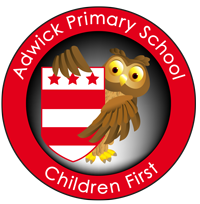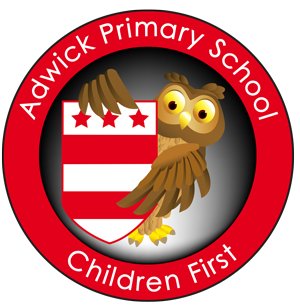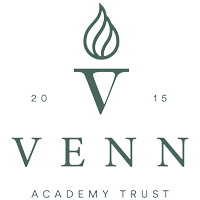Maths curriculum statement
Curriculum overviews:
Curriculum INTENT
Curriculum coverage
The school’s curriculum meets the statutory requirements of the EYFS Statutory Framework and the National Curriculum. This is studied by all pupils in their relevant Key Stage.
After researching various mathematical approaches to meet our pupils’ needs, the school has adopted a DfE recommended scheme of work – Power Maths. This scheme of work, including any associated textbooks and additional resources, have been correlated against the National Curriculum’s objectives to ensure that our pupils study the full Early Years curriculum and National Curriculum for maths.
Coherently planned and sequenced
Our maths curriculum is coherently planned and sequenced in order to facilitate learning that is free of academic gaps and needless repetition. It is designed to build upon previously taught skills and knowledge, which, in turn, provides the children with cumulatively sufficient maths knowledge and skills they need for future learning, when moving between Key Stages or as they eventually leave us for secondary school.
We also offer a wide range of rich and varied experiences that are crucial to a child’s development, this includes a ‘maths in real-life context’ morning once per term. This is to enable the pupils to see how maths can be used in the work place and/ or world outside of the school environment.
Documentation that underpins this, and that outlines a rigorous and sequential structure, has been devised by the school for Teachers and Maths Leaders to use so that they have a firm and common understanding of the school’s curriculum intent.
This documentation is saved centrally in our electronic curriculum handbook, and includes:
- Teaching Structure of Maths
- Teaching structure of mental maths
- Progression of White Rose (EYFS) and Power Maths (Y1-6)
- Calculation Policy
- National Curriculum Coverage
- Progression in critical skills and knowledge
Teaching for Mastery – ambition and equitable opportunities for all
We deliver an ambitious curriculum for all pupils by following a ‘teach to the top’ approach (based on age-related EYFS Statutory Framework and National Curriculum expectations) through Mastery Teaching via the school’s Mastery Learning Model as outlined in the school’s Mastery Teaching document.
Teaching for mastery is also central to the Power Maths approach. This supports our belief that, although pupils vary widely in their learning rates and modalities, nearly all pupils can reach a high level of achievement. We achieve this by keeping learning outcomes constant for all pupils (with the exception of extreme SEND pupils who may be on an individualised curriculum) but vary the time, support and resources needed for pupils to become proficient or competent at these objectives.
There are no preconceptions or limitations placed on a pupil’s context, ability or the progress they can make. This provides them with the same opportunities as their peers, not only on a local level but also on a national level. Therefore, all pupils, regardless of background or starting points, have equitable access to the full curriculum.
It is expected that the vast majority of pupils will achieve academic competency:
- We define academic competency as Stage 3 or above in the school’s 4 stages of competence/learning table, outlined in the school’s Mastery Teaching document.
- We define the vast majority as approximately 90% of pupils, dependent on cohort and taking into account the number of EHCP and extreme SEND (on individualised plan).
- For any pupils who do not reach the required level of academic competency/learning (Stage 3 or above), they will be further supported through additional focused intervention to secure academic competency. This will be achieved by corrective instruction in-line with our Mastery Teaching Model and Same Day Interventions (SDIs). Any pupils on an individualised learning plan will work on their individualised targets.
In order to move to the next unit/objective (whichever is the most appropriate for the next step in learning), the above criteria must be achieved for key skills and knowledge that the school deems non-negotiable (see critical skills and knowledge document) or is necessary for the next step in learning.
Concrete, Pictorial, and Abstract (CPA) approach
The Power Maths scheme of work follow the Jerome Bruner’s Concrete Pictorial Abstract (CPA) approach. This is one of the most fundamental learning theories to be implemented within any mastery classroom and greatly supports our pupils learning. The CPA approach was first proposed by Jerome Bruner in 1966 as a means of scaffolding learning. The psychologist believes that the abstract nature of learning (and this is especially true in maths) is a “mystery” to many children. It therefore needs to be scaffolded by the use of effective representations. He saw that, when pupils used the CPA approach, they were able to build on each stage towards a fuller understanding of the concepts being learnt and, as such, the information and knowledge were internalised to a greater degree. This allowed the teacher to build upon this secure learning.
The CPA approach is important for our pupils so that they can gain a secure understanding of concepts to support fluency in maths and their ability to problem solve, by helping our pupils to visualise and solve problems in a variety of ways; this is also backed by research from NCETM. NCETM state that ‘the precision of the Inspire programme allows children to gather answers that are understood deeply and clearly.’
Vocabulary
The school’s curriculum exposes our pupils to a wide range of age-appropriate vocabulary. This is supported by the White Rose and Power Maths scheme of work throughout each unit. As many aspects of the White Rose curriculum can be play based and easily adapted to our continuous provision, this allows our pupils time to independently consolidate their learning and mathematical vocabulary in a range of contexts.
We ensure our pupils have opportunities throughout every lesson to apply mathematical vocabulary through the use of peer support, talk partners and verbal reasoning explanations. The opportunity to work regularly in partner work or small group work allows our pupils to show they are able to communicate their ideas and understanding clearly and confidently.
Response to the pandemic – catch-up & remote learning
In response to the pandemic, leaders made amendments to the maths curriculum by implementing a thorough catch-up plan across the school, which identified key areas of the maths curriculum that needed to be covered to support pupils to catch-up on lost learning. Currently, the catch-up plan has combined targeted key arithmetic interventions and targeted pre-assessments which will secure gaps in learning.
We have also implemented a remote education policy, which supports the learning for any pupils who are not able to access face-face teaching due to COVID related circumstances.
Curriculum IMPLEMENTATION
Maths Timetabling
We teach Maths every day throughout school. This is outlined in the school’s curriculum timetables. We also have extra sessions to consolidate arithmetic skills twice a week, during SDI times, for Year 2-6. We also incorporate extra mental maths (times tables) skills into the timetable every day for Year 1-6.
Maths Learning Walls
Every classroom has a maths learning wall that clearly presents maths subject matter, via flipchart modelling, for the unit of work being taught. Key vocabulary for the unit of work is also displayed in every classroom, as well as vocabulary linked to the 4-operations displayed in KS1 & KS2 classrooms.
Flipchart modelling linked to number and the current maths unit of learning is also displayed on half of the washing line in classrooms.
Pupils’ Work
The work given to pupils is demanding and matches the aims of the curriculum in being coherently planned and sequenced towards cumulatively sufficient age-related knowledge.
In YN, Maths tasks are to be recorded in Maths books at least fortnightly (alternate consolidation week in Tapestry). Books will evidence either teacher annotation or pupil written work (pupil written work for mainly ARE and Above pupils).
In YR, Maths tasks are to be recorded in Maths books at least four times a week – either photographs (work/task not children), teacher annotation or pupil written work (pupil written work needs to be recorded by the pupil at least once per week).
In KS1 and KS2, daily work is expected in Maths. Independent work will consist of practical work or varied fluency questions. Independent tasks will consist of the day’s learning presented in a range of ‘varied fluency’ questions to prove understanding.
Assessment
Staff use the Mastery Learning Model as a framework for Assessment for Learning (AfL) to check children’s understanding and identify misconceptions. This is done through pre-assessment tasks; ‘check understanding’ and ‘prove it’ tasks; questioning; and pupils’ work. Staff respond and adapt their teaching as necessary based on the outcomes of AfL strategies.
School based summative assessments for Y1, 3, 4 and 5 are carried out using maths NFER tests and previous years’ published SATs papers are used for Y2 and 6. These are taken on a termly basis, with the exception of Y6 who are assessed half-termly in the Autumn and Spring term to support them with test techniques and access arrangements. Access arrangements are also put in place for all year groups based on the Y6 criteria.
School based summative assessments for the Early Years are carried out on a termly basis (half-termly for Target ARE pupils) using summative assessment tasks based on the Early Learning Goals (ELGs), which we have further broken down using the Development Matters document. These summative assessment tasks inform accurate best-fit judgements, based on what children know and can remember.
End of key stage assessment judgements for the Early Years are based on teacher assessments using the ELGs from the EYFS Statutory Framework. Evidence to inform these judgements will come mainly from the summative assessment task outcomes, collated at the end of each term. These are completed by YR teachers by the end of May and moderated by SLT before submission.
End of key stage assessment judgements for KS2 are based on KS2 SATs tests outcomes. These are completed as per KS2 SATs timetable published by the Standards & Testing Agency.
The outcomes of the above summative assessments are used to address gaps in achieving ARE and relevant interventions and adaptions to teaching content are put in place.
Curriculum IMPACT
Attainment & Progress
The impact of the curriculum on what children know, can remember and do is strong. This is evidenced through overall outcomes and therefore:
By the end of each Key Stage, we want all pupils – regardless of context, background or starting points – to make rapid progress towards achieving age-related expectations and to be at least in-line with their peers nationally. Where this is not the case, any gap to their national peers is closing rapidly.
As a result, by the end of each key stage, all of our pupils, regardless of context, background or starting points, will be have the knowledge and skills that they need for the next stage of their education.
Pupils’ work
Across all key stages, the pupils’ work will show work of a consistently high quality, demonstrating what they know and can remember. Throughout school, pupils’ work will evidence rapid progress demonstrating that they are able to apply their mathematical knowledge, concepts and procedures appropriate for their age. This will consist of:
- By the end of the Early Years – pupils are ready to use manipulatives and pictorial representations to solve calculations and problems. They have sufficient opportunities to practise and to be confident in using and understanding numbers and learning linked to the Development Matters and ELG objectives, for the relevant year group.
- By the end of KS1 – pupils are beginning to become confident problem solvers. They can apply clear pictorial strategies, to solve problems involving the 4 operations. They can also apply their understanding into real life contexts. Children will be confident in their mathematical ability and they will be able to show this by using a wide range of equipment to support their own understanding. They have sufficient opportunities to practise and to be confident in using and understanding learning linked to KS1 objectives, for the relevant year group.
- By the end of KS2 – pupils are fluent mathematicians who are able to use all four operations and apply these operations to whole numbers and fractions confidently. They will have detailed knowledge of number and use this to choose the most efficient way to solve calculations. The pupils’ ‘Challenge’ work will show mathematicians that are able to reason and be systematic problem solvers. They have sufficient opportunities to practice and to be confident in using and understanding learning linked to KS2 objectives, for the relevant year group.
Pupils’ attitudes to learning
From learning walks and pupil consultation, pupils will demonstrate:
- Confident, resilient and independent mathematicians.
- Consistent positive attitudes and commitment to their maths learning.
- High levels of motivation and an eagerness to join in.
- A deep level of engagement and sustaining high levels of concentration.
- They know how they learn effectively, and do so.
- Resilience to setbacks, demonstrating persistence in the face of difficulties, especially when working on problem solving challenges.
- They are prepared to take risks to achieve more.
- They learn through exploration.
- They work together as a ‘Team’ to achieve their learning goals.
- They learn from each other through collaboration, reflection and peer challenge.
- Pride in their work and achievements.
“Ambitious for SEND Pupils: Leaders are ambitious for pupils with special educational needs, ensuring they receive good support and achieve well.“
“Effective Pastoral Support: The pastoral team provides good support for vulnerable pupils, helping them stay safe and enjoy healthy relationships.“
“Pupils Enjoy School: Pupils are enthusiastic about their lessons and enjoy attending school.“
“Broad Curriculum: Leaders provide a broad range of subjects, which are well-planned, helping pupils remember what they learn.“
“Effective Safeguarding: Safeguarding arrangements are effective, with staff understanding their responsibilities and providing good support for vulnerable pupils.“
“Calm and Orderly Environment: The school environment is described as calm and orderly, with good behavior from pupils.“
“Focus on Reading: There is a strong emphasis on teaching reading, with high-quality training for teachers and effective support for pupils who need extra help.“
“High Expectations from Leaders: School leaders have high expectations, understand what needs to improve, and staff work well together to share ideas and support each other.“
“Engaged and Resilient Pupils: Pupils listen carefully, focus well on their activities, are keen to join discussions, and demonstrate resilience when facing difficulties.“
“Strong Early Years Provision: The early years provision is effective, with strong relationships between adults and pupils, a well-organized environment, and activities that enthuse children.“
“Extra-curricular Activities: Extra-curricular clubs are well attended, and pupils regularly go on school trips that enhance their classroom learning.“
“Supportive and Safe Environment: Pupils feel safe, understand that bullying is rare, and know that adults are there to help if needed.“




